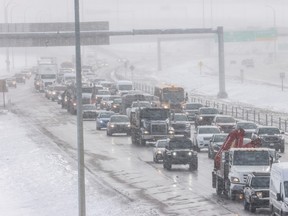The report found that auto insurance premium costs and claim costs are rising at a faster rate than insurance premiums, resulting in poor profitability for providers

The province’s control on auto insurance premiums may be doing more harm than good, a recent public policy report has found.
“This situation makes the policy intent of price caps ultimately self-defeating,” Mintz wrote in the report, published Oct. 11. “It is complex to administer and distorts prices.”
Mintz recommended the price caps and grid rating system be “abolished” in favour of a market-controlled system, where companies compete for customers with “competitively determined contracts.”
The government, he added, could set minimum conditions such as experience-rating, basic insurance benefits and deductibles and co-payments to ensure more affordable premium levels for drivers.
If the goal is to reduce auto premiums, the province should consider either abolishing or reducing the insurance tax premium from 4 to 3 per cent, he stated.
The grid system, price caps ineffective
The grid rating system was first implemented in 2004 as a way to ensure new drivers could get an affordable premium, by capping the premiums that insurance companies could charge for basic coverage as well as preventing substantial annual increases.
In January 2023, Alberta implemented a one-year freeze on auto insurance rates to tackle affordability concerns, to which some auto insurers responded by exiting the market.
The freeze was followed by a “good driver” rate cap of 3.7 per cent in November 2023, to keep rates low for drivers with a safe driving history of at least four years.
“Price caps distort pricing and leads to financial instability when insurance companies cannot earn sufficient profits to maintain capital investment,” Mintz highlighted in the 2024 report.
“Their negative impact on the availability of coverage — due to either insurer withdrawal or sales restrictions — forces many drivers to find new, often more expensive coverage, elsewhere in the market,” the report added.
Insurer costs rising, companies leaving the market
Between 2013 and 2023, the report found claim costs and insurance premium costs rose at a faster rate than insurance premiums. Real insurance premium costs, for example, rose by 18 per cent, but the average increase in insurance premiums has been 4.1 per cent.
Claim costs and bodily injury claim costs have also risen over the same period of time by an average of 6.3 per cent and 8 per cent, respectively. “These costs obviously put pressure onto the premium costs,” the report stated.
Additional cumulative expenses related to administration, information technology, marketing, renewal costs and a four per cent insurance premium tax, all of which could imply an additional cost of $450 to provide insurance in 2023, the report added.
Return on equity between 2012 and 2022 has been negative 1.2 per cent as well as 0.5 per cent over the past six years, excepting 2021 and 2022, the report stated.
The return to equity in 2021 and 2022 averaged at 12.3 per cent and 6.8 per cent respectively.
Since 2013, 10 auto insurance providers have announced they are leaving the Alberta market. Three companies announced in 2024 that they would leave due to rate caps and poor profitability.
Reverting to a competitive market
Mintz suggested reverting to a competitive market that encourages price competition, consumer choice and innovation.
“Insurance that reduces the risks associated with driving also supports demand for automobiles and increased driving in the economy,” he wrote in the report.
Government reform policies should prioritize economic efficiency, fairness and financial stability, two of which price caps do not do, the report explains. “The Grid used by Alberta includes various price caps to protect certain drivers from higher insurance premiums, but this comes at the expense of other drivers who have to bear higher premiums such as good drivers,” it stated. “The Grid is complex to manage and should be abolished.”
The report suggested considering a hybrid system of no-fault insurance and tort insurance, which allows drivers the right to sue for more significant claims such as death, impairment and lost income.